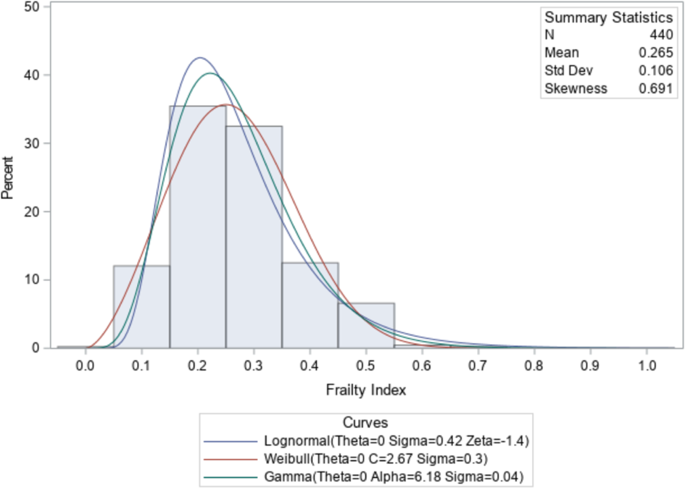Our official English website, www.x-mol.net, welcomes your
feedback! (Note: you will need to create a separate account there.)
An MDS-specific frailty index based on cumulative deficits adds independent prognostic information to clinical prognostic scoring.
Leukemia ( IF 12.8 ) Pub Date : 2019-12-06 , DOI: 10.1038/s41375-019-0666-7 R Starkman 1 , S Alibhai 2 , R A Wells 1 , M Geddes 3 , N Zhu 4 , M M Keating 5 , B Leber 6 , L Chodirker 1 , M Sabloff 7 , G Christou 7 , H A Leitch 8 , E St-Hilaire 9 , N Finn 9 , A Shamy 10 , K Yee 11 , J Storring 12 , T Nevill 13 , R Delage 14 , M Elemary 15 , V Banerji 16 , M Lenis 17 , A Kirubananthaan 17 , A Mamedov 17 , L Zhang 1 , K Rockwood 18 , R Buckstein 1
Leukemia ( IF 12.8 ) Pub Date : 2019-12-06 , DOI: 10.1038/s41375-019-0666-7 R Starkman 1 , S Alibhai 2 , R A Wells 1 , M Geddes 3 , N Zhu 4 , M M Keating 5 , B Leber 6 , L Chodirker 1 , M Sabloff 7 , G Christou 7 , H A Leitch 8 , E St-Hilaire 9 , N Finn 9 , A Shamy 10 , K Yee 11 , J Storring 12 , T Nevill 13 , R Delage 14 , M Elemary 15 , V Banerji 16 , M Lenis 17 , A Kirubananthaan 17 , A Mamedov 17 , L Zhang 1 , K Rockwood 18 , R Buckstein 1
Affiliation

|
The frailty index (FI) is based on the principle that the more deficits an individual has, the greater their risk of adverse outcomes. It is expressed as a ratio of the number of deficits present to the total number of deficits considered. We developed an MDS-specific FI using a prospective MDS registry and assessed its ability to add prognostic power to conventional prognostic scores in MDS. The 42 deficits included in this FI included measurements of physical performance, comorbidities, laboratory values, instrumental activities of daily living, quality of life and performance status. Of 644 patients, 440 were eligible for FI calculation. The median FI score was 0.25 (range 0.05-0.67), correlated with age and IPSS/IPSS-R risk scores and discriminated overall survival. With a follow-up of 20 months, survival was 27 months (95% CI 24-30.4). By multivariate analysis, age >70, FI, transfusion dependence, and IPSS were significant covariates associated with OS. The incremental discrimination improvement of the frailty index was 37%. We derived a prognostic score with five risk groups and distinct survivals ranging from 7.4 months to not yet reached. If externally validated, the MDS-FI could be used as a tool to refine the risk stratification of current clinical prognostication models.
中文翻译:

基于累积缺陷的MDS特异性脆弱指数为临床预后评分增加了独立的预后信息。
脆弱指数(FI)是基于以下原则:一个人的赤字越多,其不良后果的风险就越大。它表示为存在的缺陷数与所考虑的缺陷总数之比。我们使用前瞻性MDS注册中心开发了MDS特异性FI,并评估了其将常规MDS预后评分增加预后能力的能力。该金融指标中包括的42个缺陷包括身体表现,合并症,实验室值,日常生活的工具活动,生活质量和表现状态的测量值。在644位患者中,有440位符合FI的计算条件。FI的中位数为0.25(范围为0.05-0.67),与年龄和IPSS / IPSS-R风险评分相关,并区分了总体生存率。随访20个月,生存期为27个月(95%CI 24-30.4)。通过多变量分析,年龄> 70岁,FI,输血依赖性和IPSS是与OS相关的重要协变量。脆弱指数的增量歧视改善为37%。我们通过五个风险组和从7.4个月到尚未达到的不同生存率得出了预后评分。如果经过外部验证,则MDS-FI可用作改进当前临床预后模型风险分层的工具。
更新日期:2019-12-06
中文翻译:

基于累积缺陷的MDS特异性脆弱指数为临床预后评分增加了独立的预后信息。
脆弱指数(FI)是基于以下原则:一个人的赤字越多,其不良后果的风险就越大。它表示为存在的缺陷数与所考虑的缺陷总数之比。我们使用前瞻性MDS注册中心开发了MDS特异性FI,并评估了其将常规MDS预后评分增加预后能力的能力。该金融指标中包括的42个缺陷包括身体表现,合并症,实验室值,日常生活的工具活动,生活质量和表现状态的测量值。在644位患者中,有440位符合FI的计算条件。FI的中位数为0.25(范围为0.05-0.67),与年龄和IPSS / IPSS-R风险评分相关,并区分了总体生存率。随访20个月,生存期为27个月(95%CI 24-30.4)。通过多变量分析,年龄> 70岁,FI,输血依赖性和IPSS是与OS相关的重要协变量。脆弱指数的增量歧视改善为37%。我们通过五个风险组和从7.4个月到尚未达到的不同生存率得出了预后评分。如果经过外部验证,则MDS-FI可用作改进当前临床预后模型风险分层的工具。









































 京公网安备 11010802027423号
京公网安备 11010802027423号